Business Process Management (BPM) is an indispensable tool that helps financial services organizations discover, model, analyze, measure, improve, and optimize their financial operations and processes or achieve specific objectives.
In the context of financial operations, BPM aims to streamline processes such as accounting, budgeting, payroll, compliance, and reporting.
In this article, you will learn how to leverage BPM to optimize financial operations and steps to integrate BPM into your system and processes.
Key Components of BPM
While Business Process Management (BPM) is a broader discipline that covers a number of components and concepts crucial for the effective implementation and optimization of financial options, the following components make its core:
1. Process Modeling
The process includes creating visual representations of financial processes. This is needed to understand and analyze each process and flow.
2. Process Optimization
This includes finding out the inefficiencies and bottlenecks in financial operations and solutions to eliminate them.
3. Process Automation
Next comes the implementation part, where technology solutions are applied to automate repetitive and time-consuming tasks.
4. Continuous Improvement
Finally, it is important to continuously and regularly review and refine processes. This is crucial to ensure that the processes remain efficient and relevant.
Step 1. Identify Key Financial Processes
The first step in optimizing financial operations through Business Process Management (BPM) is to identify the key financial processes within your organization. By doing this, banks and financial institutions can:
- Map out the process workflow
- Understand interdependencies
- Detect areas that require improvement or automation
For this, banks and financial institutions can:
- Begin by compiling the list of all the financial processes in the organization, from high-level processes, such as financial reporting, to granular tasks, such as petty cash management.
- Engage and collaborate with various departments, such as accounting, payroll, procurements, etc.
- Make sure no process is left or overlooked.
To collect all this information and map processes in the organization, they can use popular techniques such as brainstorming sessions, workshops, and interviews with all the key stakeholders. Also,
- Rate the processes based on their impact and frequency – this will help find the most impactful and critical processes the organization needs to focus on.
- Map the processes and ensure they align with the organization’s goals.
- Validation of key processes from various departments
Make sure to templatize the documentation for consistency in recording and mapping the processes.
Step 2: Analyze and Model Financial Processes
Once key financial processes are identified, the next step is to analyze and model them. This will help the financial institution or bank to learn and understand the current state, inefficiencies, and areas for improvement in the processes.
For this, they can:
Create flowcharts or Business Process Modeling Notation (BPMN) diagrams to show every step in the process – from beginning to end. This includes all inputs, outputs, decision points, and information flow.
Identify the bottleneck, redundancies, and inefficiencies by reviewing the mapped-out or visually represented processes – use the “Five Whys” technique.
At this stage, define the key performance indicators. These will help measure the efficiency and effectiveness of financial processes before and after optimization, for example, processing time, error rates, and cost per transaction.
Step 3: Optimize Financial Processes
After a clear understanding of all the existing and current processes in the financial institution, they need to focus on optimization.
To streamline and improve these processes, financial institutions need to simplify complex processes by removing unnecessary steps and automating routine tasks.
For example, automating invoice approvals can significantly reduce processing time.
This will not only help reduce manual effort and increase accuracy but also improve compliance. To achieve this, banks or financial institutions can:
- Use Robotic Process Automation (RPA) or Enterprise Resource Planning (ERP) system – this helps integrate financial data across departments.
- Deploy data validation rules and use a database management system to maintain data consistency. Additionally, regularly audit data to prevent discrepancies.
Step 4: Ensure Continuous Monitoring and Improvement
Optimization and continuous monitoring followed by iterative refinements are essential for improving processes. This helps ensure improvements and adapt to changes.
- Continuously monitor processes – combine internal and external reviews to get an unbiased evaluation that will help continuously improve the processes.
- Use RegTech solutions to monitor and ensure adherence to financial reporting, internal policies, and tax laws, and set up automated alerts in case of deviations from compliance requirements.
- Use Business Intelligence (BI) tools to monitor processes and data analytics to predict trends, identify opportunities, and make more informed (data-driven) decisions for further optimization.
- Develop a culture that encourages ongoing process evaluation and enhancement. Implement continuous improvement frameworks and reward employees who contribute to the process enhancements – make sure to gather feedback from team members who are directly involved with these processes.
Conclusion
Optimizing financial operations through Business Process Management is a powerful strategy for enhancing efficiency, accuracy, and compliance.
However, this requires careful analysis, modeling, and automation of financial processes. By doing this, banks and financial institutions can improve their financial operations.
At Anaptyss, we specialize in helping banks and financial institutions unlock the full potential of their financial operations through tailored BPM solutions. To start your financial operations journey to the next level, reach us at info@anaptyss.com



